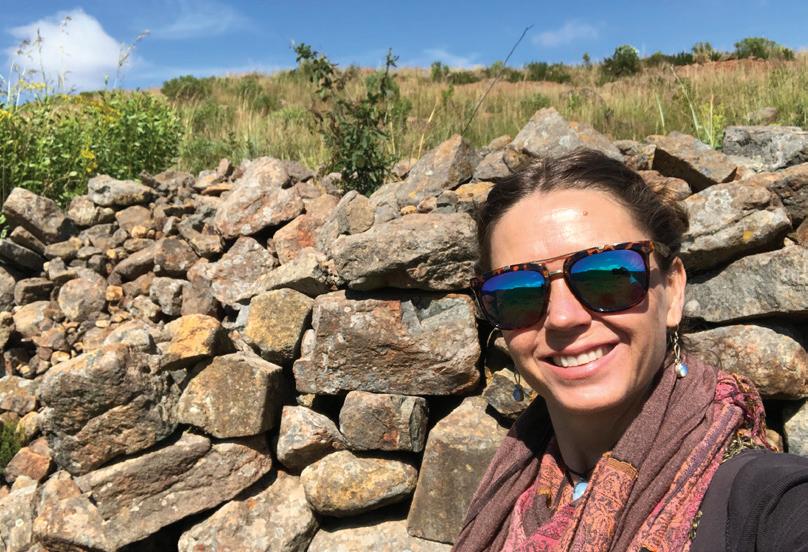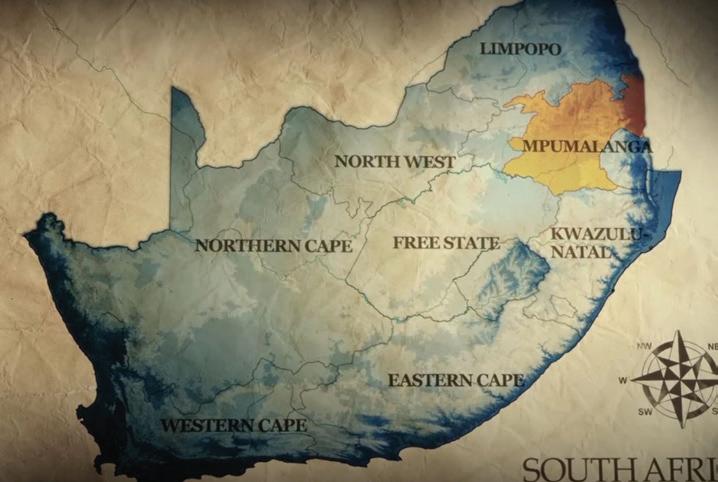
4 minute read
Sacred Sites
Africa’s Greatest Mysteries The Stone Circles of Mpumalanga By Louise Clarke

Mpumalanga, the ‘Land of the rising Sun’ as it is called in South Africa, is a place of indescribable beauty. It was here that the mighty Gondwana split, leaving in its wake a land of rich and ancient geological diversity; a natural wonderland, among the most unique and beautiful on earth. It boasts the world’s largest green canyon, the place where Africa’s Big five still roam free, a thousand waterfalls… And, until fairly recently, a forgotten stone walled settlement spanning 10,000 square kilometres!
If there is one thing I have learned from delving into the ancient mysteries of Africa, it is that perspective is everything. For hundreds of years people have been stumbling across the hillsides of the Mpumalanga escarpment, dotted with what were presumably cattle enclosures. Yet it wasn’t until we had the technology of Google Earth in our hands that we were able to comprehend the vastness of an ancient African civilisation, larger than Los Angeles today.
It was in 2011 when I moved to Waterval Boven, a little forgotten town at the gateway of the escarpment to the Lowveld, where I lived and worked with Michael Tellinger for five years. Here at the epicentre of this stone walled mystery and, though I spent years exploring the area and was privy to the research of many authors and scientists who visited the area, I still cannot say for certain who created this ‘settlement’ or why.
Getting back to perspective, of course, the more ways you look at something, the clearer your perspective becomes. In this case, without a bird’s eye view one would never really know what you were looking at. Just to get started, you then need to consider the history, the indigenous accounts, the language, the science, geology, archaeology and astronomy around the phenomenon.
Here’s what’s been found.
An aerial view of the escarpment reveals clusters of stone walling and sprawling expanses of stone circles and inexplicable mazes of stone ridging linked by interconnected, serpentine stone passages. The complex spans 150km and, from the air resembles, an intricately connected geometric design contouring the hillsides and stretching across valleys. According to Delius, Schoeman and Maggs, who wrote the provocative Forgotten World, the stone walled settlements

are attributed to the Bakoni people, who built the entire metropolis between 1500 and 1820, at which time it was deserted due to warring factions passing through the area.
Now some of the circles are quite elaborate constructions, some almost three meters high, others much lower, the walls skilfully constructed with small pebbles filling two outer lanes of rocks. The vast majority of them are complete, intact, enclosed circles that have no gateways or entrances for cattle or people to enter, with others being too low to contain cattle effectively. In almost every case, the overall design is complex, convoluted combinations of circles and spirals set within larger, encompassing circles, often representing cymatic patterns. A few have been found to align to sacred geometric principles. And the stones themselves ring like bells. It is interesting to note that, close to Lydenburg, several rock engravings have been discovered at Boomplats, depicting aerial ‘maps’ of some of the stone settlements. A kind of Google earth bird’s eye perspective carved in stone, said to be the work of Bokoni cattle herders ‘whiling away their time’. It is not known for sure how old these engravings are, or how the artists came to that privileged perspective in the first place.
Michael Tellinger proposes that this is the site of the Sumerian Lord Enki’s vast gold mining operation in the lower ‘Abzu’ and that the circles represent some sort of large scale earth energy grid. He explains that the circles are cymatic patterns of the subtle frequencies resonating from the earth at each particular point and that the stone walls amplify the frequencies through their concentrated quartz/ silica content. The results are strong electromagnetic fields emanating from the circles that were somehow harnessed by the Annunaki to extract the minerals “where the gold veins from the earth innards were abundant.”

Certainly, the history of Africa is one of the great untold stories of all time. It is possible that both theories are correct. Perhaps those are stone circles depicted on the Sumerian tablet of their creation myth. Perhaps the Bakoni peoples repurposed an ancient site. We will never know for sure, yet I would recommend to everyone to come and experience it for themselves.

“There are things known and there are things unknown, and in between are the doors of
perception.” - Aldous Huxley



Louise Clarke Exploring sacred sites in Africa and walking as an art of healing.
Image Credit: Louise Clarke










